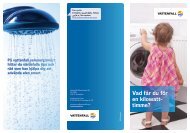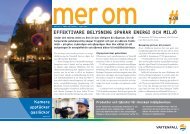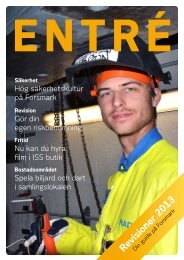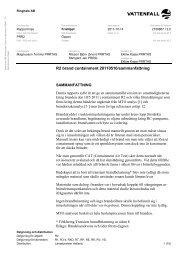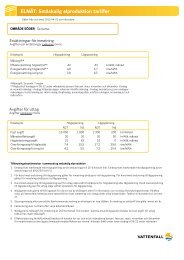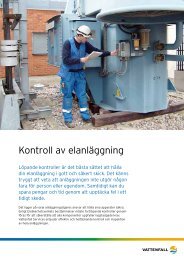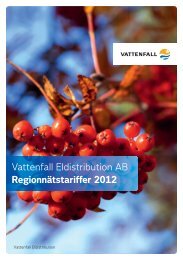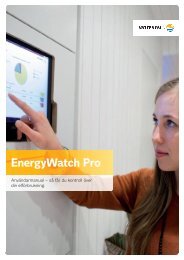This environmental impact assessment for Kriegers flak ... - Vattenfall
This environmental impact assessment for Kriegers flak ... - Vattenfall
This environmental impact assessment for Kriegers flak ... - Vattenfall
Create successful ePaper yourself
Turn your PDF publications into a flip-book with our unique Google optimized e-Paper software.
108 PRESENTATION OF THE AREA<br />
Shipping routes developed by GL based on AIS statistics<br />
11.10.2 Traffi c fl ow at <strong>Kriegers</strong> Flak<br />
The shipping around the wind farm KF II could be<br />
described as Þ ve main shipping lanes with a total frequency<br />
of around 65000 ship passages.<br />
The main ß ow of trafÞ c through the southern Baltic<br />
has two distinct shipping lanes. One directed towards<br />
the Belts and German ports west of Rügen and another<br />
directed towards Öresund. The lane towards the Belts<br />
passes south of <strong>Kriegers</strong> Flak and the planned German<br />
wind farm whilst the lane towards Öresund passing the<br />
Swedish south coast.<br />
Apart from these two lanes, there are three others<br />
mainly used by ferries between Trelleborg and<br />
Travemünde/Rostock, Trelleborg and Sassnitz/Swinoujscie<br />
and Öresund and Sassnitz/Swinoujscie.<br />
11.11 The Fishing Industry<br />
Commercial Þ shing at <strong>Kriegers</strong> Flak is mainly carried<br />
out by Swedes but also by Danish and German professional<br />
Þ shermen. The largest catches are caught in the<br />
area just north of the planned wind farm. With statistics<br />
from the National Board of Fisheries as a base,<br />
the average yield within the proposed area of <strong>Kriegers</strong><br />
Flak is estimated to about Þ ve kg/ha/year. The low<br />
yield, partly depends on that trawling is very difÞ cult<br />
due to an often rocky seabed.<br />
11.11.1 General about the professional<br />
fi shermen of Skåne<br />
The Þ shing ß eet on the south coast (Blekinge and<br />
Skåne) amounted to 472 vessels in 2002. Of these, 418<br />
or 89 % were below 12 metres in length. The smallscale<br />
coastal Þ shing is clearly dominating, looking at<br />
the number of ships of the south coast ß eet. The bigger<br />
tonnage in concentrated to Simrishamn, Sölvesborg<br />
and Karlskrona. During the 1990’s the gross tonnage<br />
of the ß eet diminished with just over 40 %. The bigger<br />
tonnage on the south coast diminished from 20 % to 12<br />
% during the same time. The typical south coast Þ shing<br />
boat is a 20 year old net-Þ shing boat with a length<br />
of less than 12 metres.<br />
The Þ shing companies in Skåne are, since the beginning<br />
of the 90’s, more and more dependant on cod<br />
Þ shing, which, <strong>for</strong> six out of ten businesses, represents<br />
85 % of their income. For the south coast Þ shermen,<br />
the average value per catch was about SEK 288 000<br />
(2001). A large part of this is used to cover capital and<br />
running costs. According to in<strong>for</strong>mation from a report<br />
by the National Board of Fisheries regarding household<br />
income of the local Þ shing community (1997), the av-




